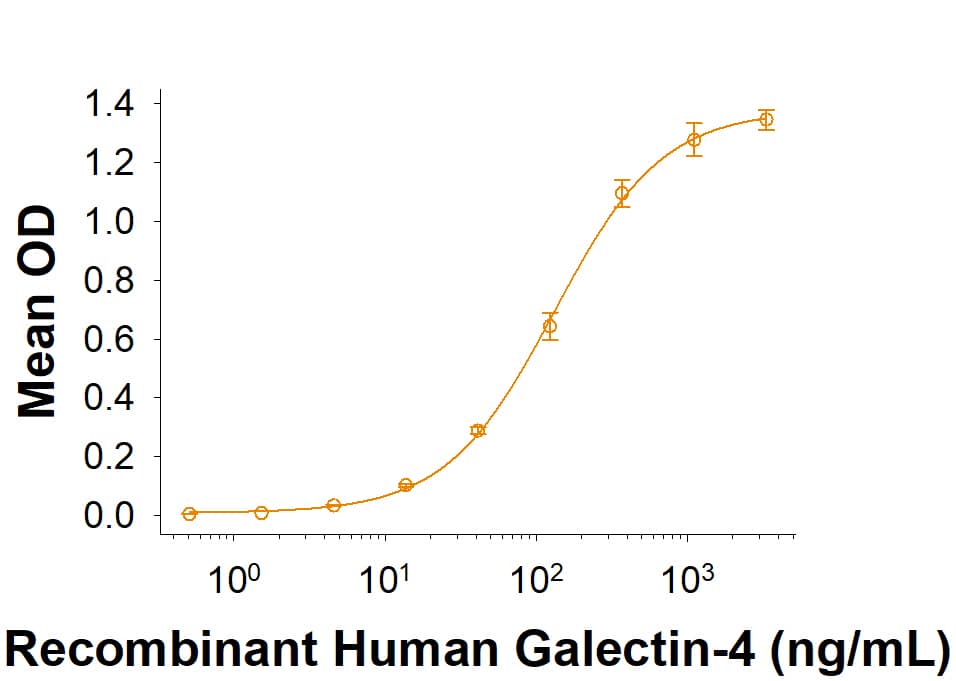CEACAM-5/CD66e: Proteins and Enzymes
CEACAM-5, also known as CEA and CD66e, belongs to the large family of CEACAM and pregnancy specific glycoproteins. CEACAM molecules are either transmembrane or GPI-linked, and are differentially expressed between species. Orthologs of human CEACAM-5 have not been described in other species. CEACAM-5, which is expressed primarily by epithelial cells, consists of an N-terminal Ig like V-set domain followed by six Ig-like C2-set domains and a GPI anchor. CEACAM-5 is synthesized as a 180 kDa, variably glycosylated molecule of which approximately 60% is carbohydrate. CEACAM-5 functions as a calcium independent adhesion molecule through homophilic and heterophilic interactions with CEACAM-1.
CEACAM-5 is restricted to the apical face of intestinal epithelial cells in the adult but is more diffuse during embryonic development and in tumors. This is consistent with a role in the development and maintenance of epithelial architecture. CEACAM-5 is upregulated in a wide variety of human tumors and is a commonly used cancer marker. It promotes tumor cell migration, invasion, adhesion, and metastasis. CEACAM-5 also contributes to tumor formation by maintaining cellular proliferation in the presence of differentiation stimuli, and by blocking apoptosis following loss of ECM anchorage (anoikis).
6 results for "CEACAM-5/CD66e Proteins and Enzymes" in Products
6 results for "CEACAM-5/CD66e Proteins and Enzymes" in Products
CEACAM-5/CD66e: Proteins and Enzymes
CEACAM-5, also known as CEA and CD66e, belongs to the large family of CEACAM and pregnancy specific glycoproteins. CEACAM molecules are either transmembrane or GPI-linked, and are differentially expressed between species. Orthologs of human CEACAM-5 have not been described in other species. CEACAM-5, which is expressed primarily by epithelial cells, consists of an N-terminal Ig like V-set domain followed by six Ig-like C2-set domains and a GPI anchor. CEACAM-5 is synthesized as a 180 kDa, variably glycosylated molecule of which approximately 60% is carbohydrate. CEACAM-5 functions as a calcium independent adhesion molecule through homophilic and heterophilic interactions with CEACAM-1.
CEACAM-5 is restricted to the apical face of intestinal epithelial cells in the adult but is more diffuse during embryonic development and in tumors. This is consistent with a role in the development and maintenance of epithelial architecture. CEACAM-5 is upregulated in a wide variety of human tumors and is a commonly used cancer marker. It promotes tumor cell migration, invasion, adhesion, and metastasis. CEACAM-5 also contributes to tumor formation by maintaining cellular proliferation in the presence of differentiation stimuli, and by blocking apoptosis following loss of ECM anchorage (anoikis).
Analyzed by SEC-MALS, His-tag
| Source: | NS0 |
| Accession #: | Q8N4D0 |
| Applications: | Bind |
HEK293 Expressed Protein
| Source: | HEK293 |
| Accession #: | NP_004354.3 |
| Applications: | BA |
Biotinylated
| Source: | CHO |
| Accession #: | NP_004354.3 |
| Applications: | BA |
Biotinylated
| Source: | CHO |
| Accession #: | NP_004354.3 |
| Applications: | BA, BA |
| Source: | NS0 |
| Accession #: | Q3UKK2.1 |
| Applications: | BA |
| Source: | NS0 |
| Accession #: | Q3UKK2.1 |
| Applications: | BA |






